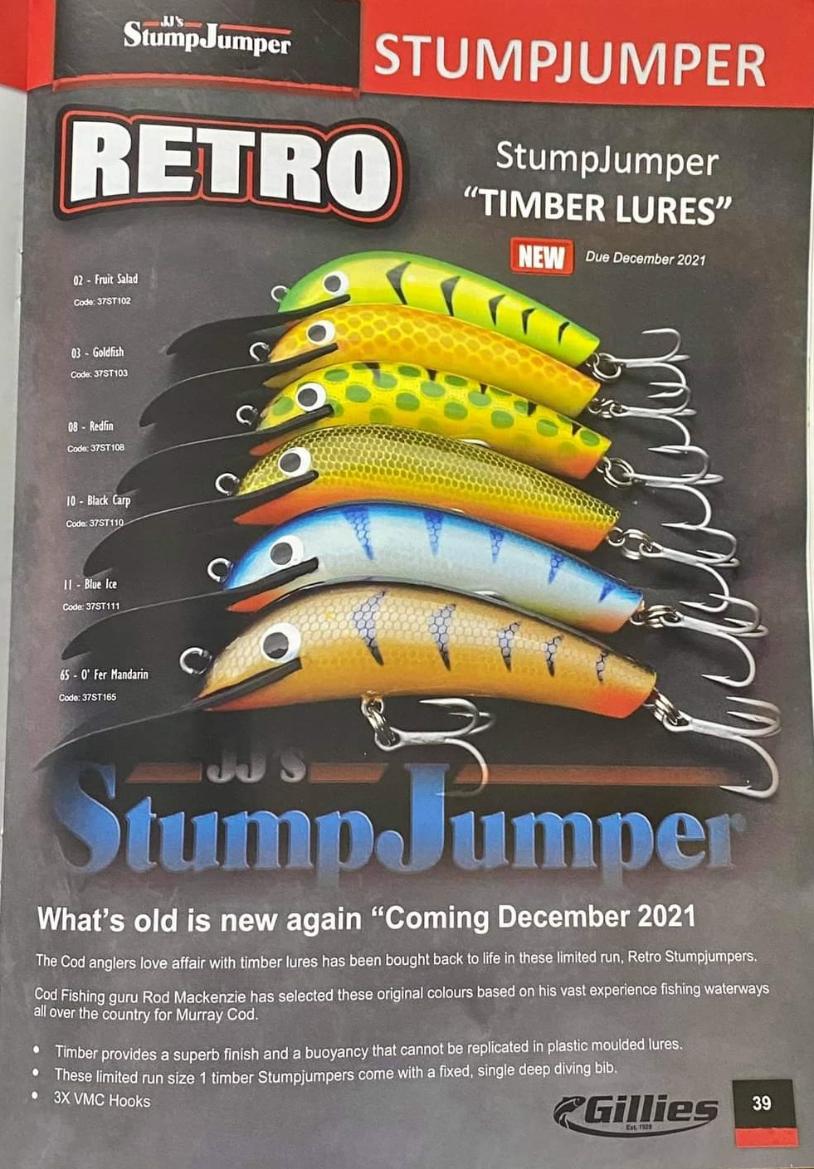JJ's Lures - John Ellis
*Banner Image - An early timber John Ellis lure
John Ellis creations:
Although John Ellis is known for the 'Stumpjumper' range that has existed since 1986, there are many other designs that John created before settling on the best selling Stumpjumper. Some of those lures are showcased here for the first time and have been signed and authenticated. This page would not have been possible without the help of Darren Uren and John Ellis
The first lures shown are the original forerunner to the early Stumpjumper patterns with scent holes to add attractant. Notice the early wide scale patterns that were used on the early timber lures. The very steep bib angle would mean this design would dive deep and fast which was always the aim of the Stumpjumper design.
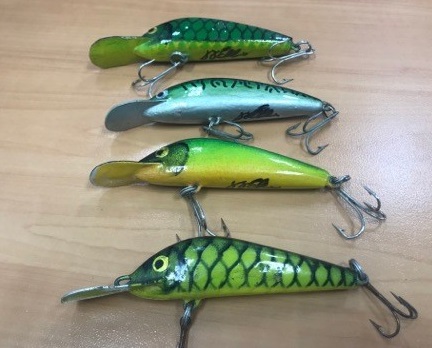
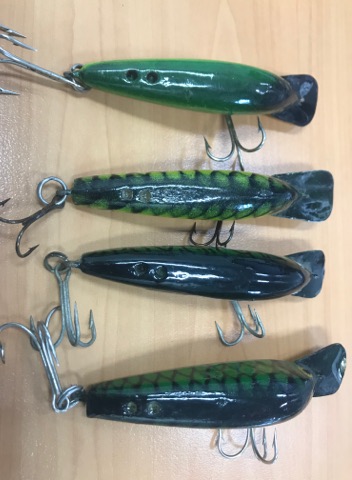
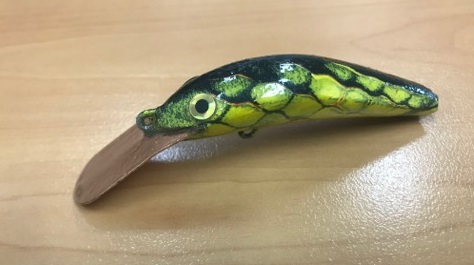
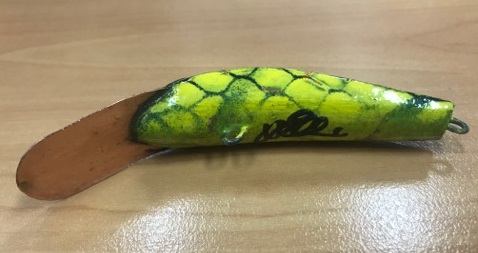
The lure above is an older John Ellis lure reminiscent of a smaller 'Stumpie' which has a copper bib and split pin eyelets inserted exactly the same as on the early timber Stumpjumper lures which can be identified by this feature. Note the scale pattern again.
There are many designs including surface lures and smaller lead weighted timber vibes suitable for impoundment bass
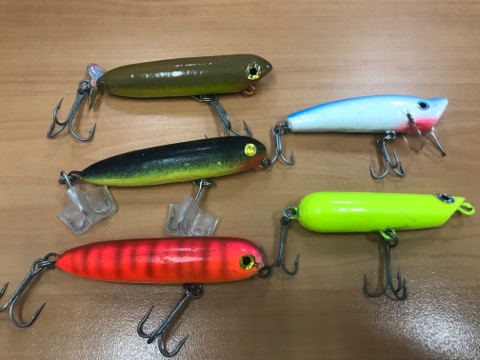
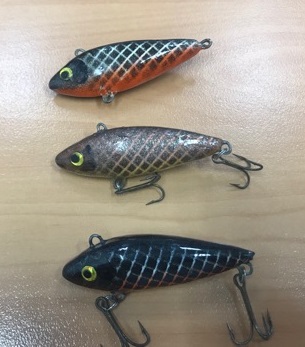
A number of other patterns suitable for trout or other native fish. Lures below are Stumpjumpers with a polycarbonate bib instead of the metal bib in size 2 & 3
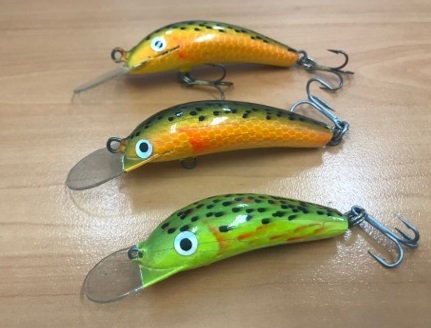
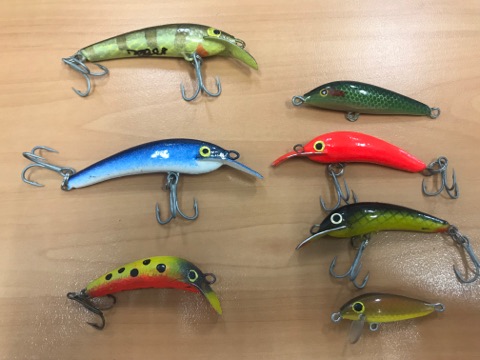
The lures below are a larger timber minnow made for larger pelagic fish and ocean work. John was not just interested in freshwater fishing although much of his range was designed for Australian freshwater fishing applications.
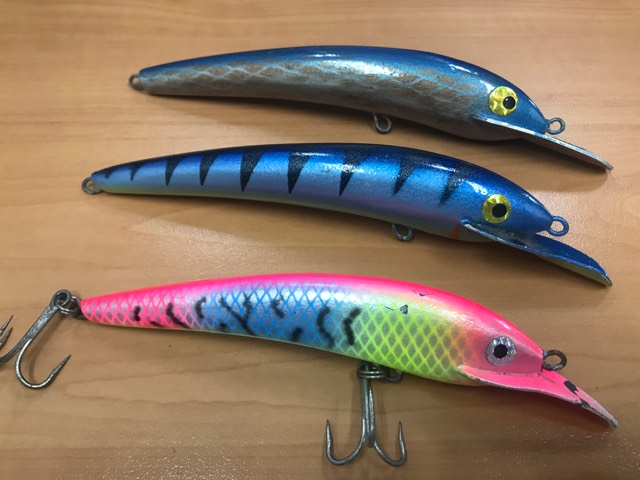
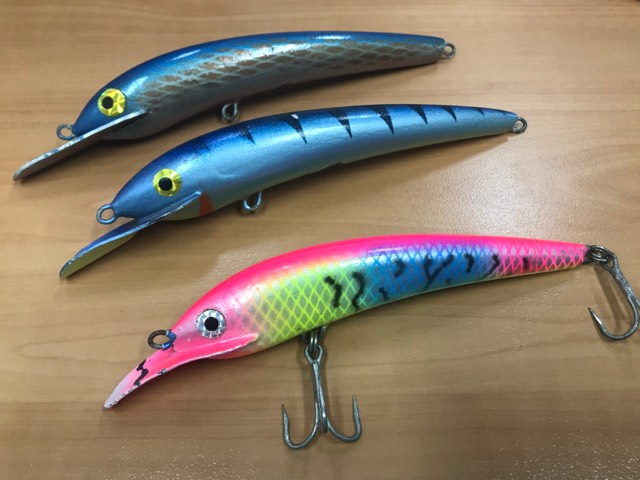
The lure below is the timber version of the colour pattern that was eventually used in the moulded range of the JJ's Stumpjumper.
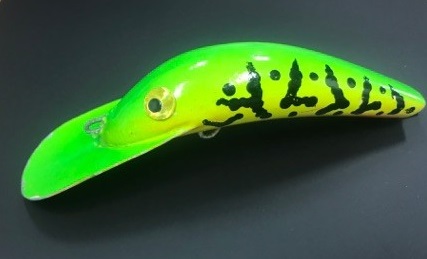
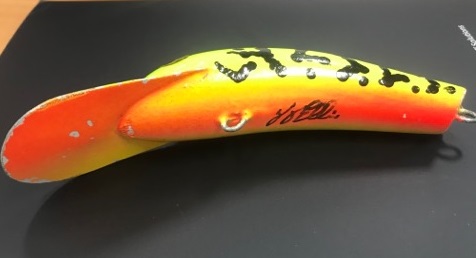
J.J's Lures - 'Stumpjumper':
The Stumpjumper story really starts in Cobram, Victoria, with John Ellis being a keen cod fisherman and wanting a lure that could dive quickly yet buoyant enough to float above logs and not get snagged up as often. The classic lure was first made in timber by John in 1986 and by 1987 there was demand enough to go into commercial production. John quickly made a machine to automate the shaping of the lure bodies which was a cross between a copy lathe and a profile cutter and it enabling him to produce 20 - 30 lures a week. Those early wooden 'Stumpies' (as they became known) were built from Western Red Cedar. It is estimated he produced somewhere around 1500 wooden bodied Stumpjumper lures all up. They originally came in only 10 colour patterns with flat aluminium bibs. There are some timber lures with plastic bibs but only in very small numbers. He also started looking at the concept of ‘slide-in’ bibs at this time.
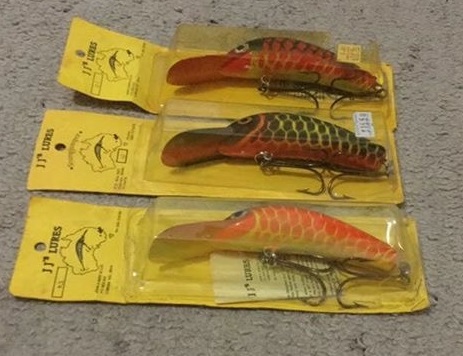
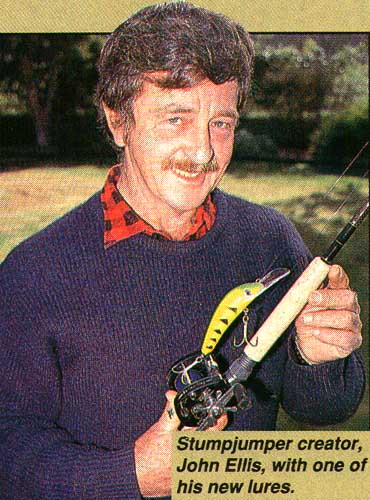
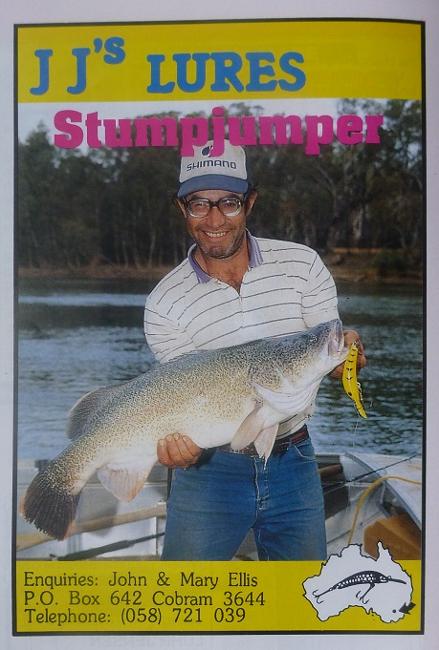
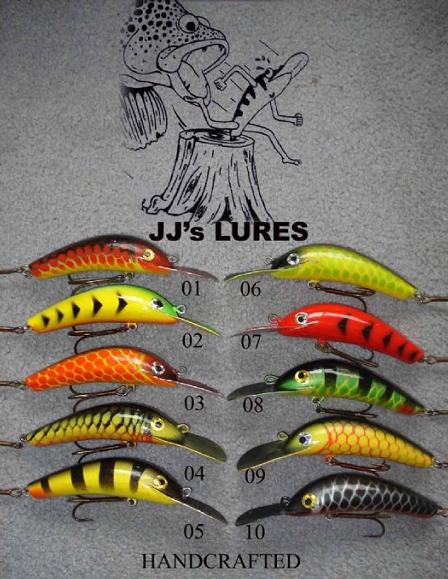
The pearl inlay Stumpjumper shown below was a special release in small numbers. It is not the rarest of all the Stumpjumper lures but will still fetch prices up to $2000 in today's market (2018). Lure Hub OZ sold one with original packaging at Lure Expo 2017 for $2200 to a collector.
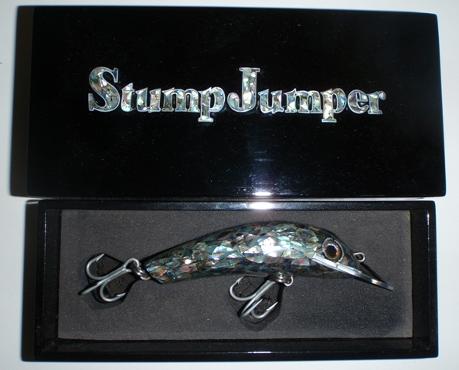
By 1991 demand for John’s cod lures had increased to the point where he could not keep up with demand and the lure construction went from the traditional wooden bodies to plastic. He moulded the lures from ABS plastic, which has since become the industry standard, and is a pioneer being the first Australian maker to mass produce using ABS. In recent times, the lures are manufactured offshore. The time frames are as follows;
Timber Stumpys made from 1987 - 1991
Plastic Stumpys with removable bibs started in late 1991
Full production started in 1992.
Application for US Patent Jan 1993 - patented Oct 1994
Pad printing on the full coloured bodies in mid 1994.
(Above and left) The earliest form of JJ's Lures packaging for the Stumpjumper before they were made in plastic and still timber with metal bibs. This packaging is pre 1991. Earliest packaging for urathane lures shown below (lure is a timber Stumpjumper in later packaging)
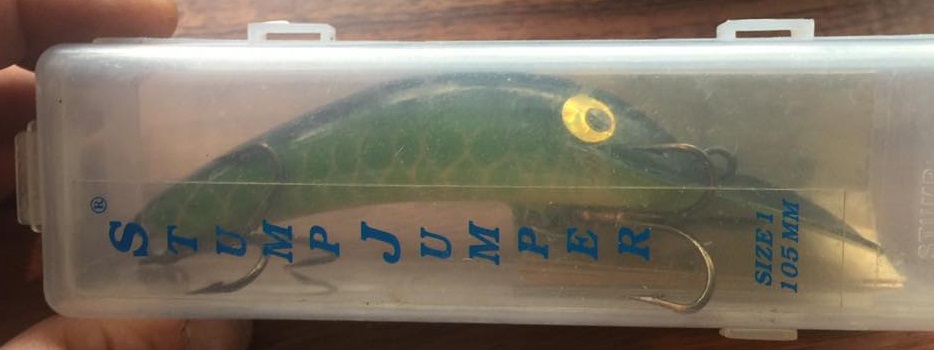
(Below) An early JJ's Lures colour chart c.1990/1 that shows the ten colours that were available. Collectors have noticed that the lures were released with gold and silver holographic eyes. From the Lure and More forum.
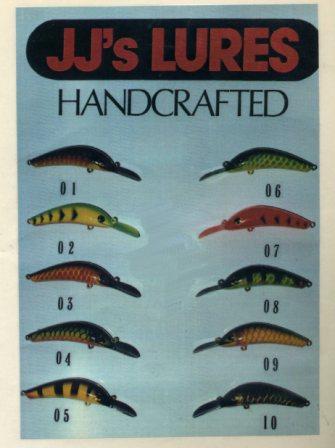
Timber Stumpjumpers were first made and sold with silver/black and gold/black eyes and in 10 different colour combinations. The early timber models are now rare and highly collectible having been made in plastic since the early 1990's.
(Above) 'The Eleventh colour' noted by a few specialist collectors which makes the original colour set 22 if you include both sets of eye colours. This is black scale over yellow instead of yellow scale over black (colour 4). Unsure if this pattern was ever done with another eye colour.
(Left) Advertisement from Freshwater Fishing magazine c.1992 showing timber stumpy although production of the plastic model had already started. This photo shows a timber stumpy caught Murray Cod.
(Below) Timber 'Stumpjumper' pair colour number 5.
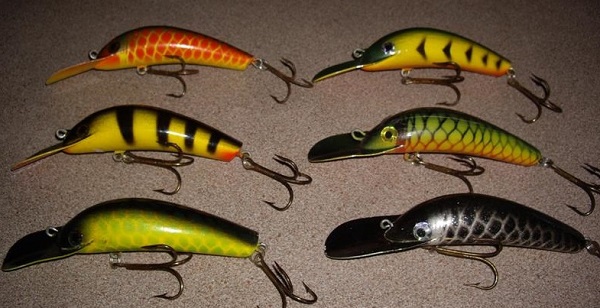
(Left) Full colour set with early promo and logo material. From the now defunct Lure and More forum. This early logo of the lure with legs is rarely seen.
The photos above show the evolution of the JJ's Stumpjumper from the earlier late 1980's - early 1990's timber model (top) to the transition model when the bibs had been painted but with plastic bodies (middle), to the redesigned plastic version (bottom) with removable bib that is similar to the modern versions in production today. The Stumpjumper lures remained the same with the evolution from timber to plastic - shape and colours remained part of the JJ's stable for many years to come and are easily recognised. There is some great information posted on the Lure and More forum on JJ's Stumpjumper Lures.
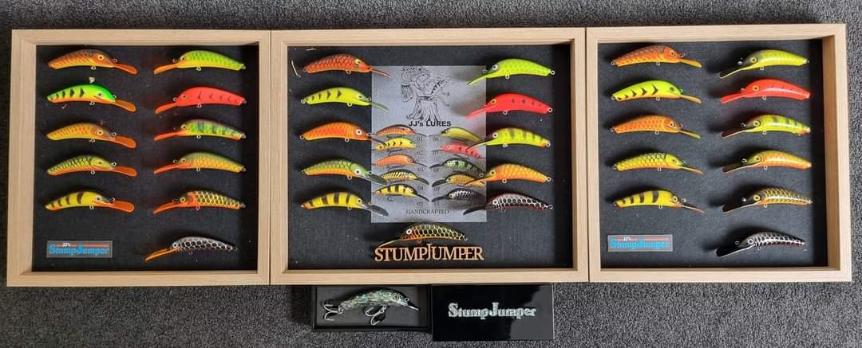
(Above) Full colour set with early promo and logo material - this set shows the original timber versions and the first plastic versions with fixed moulded bib
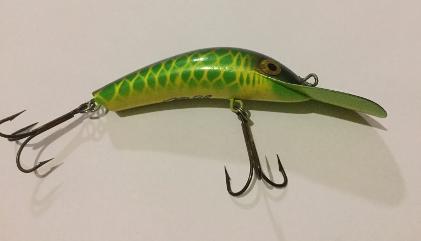
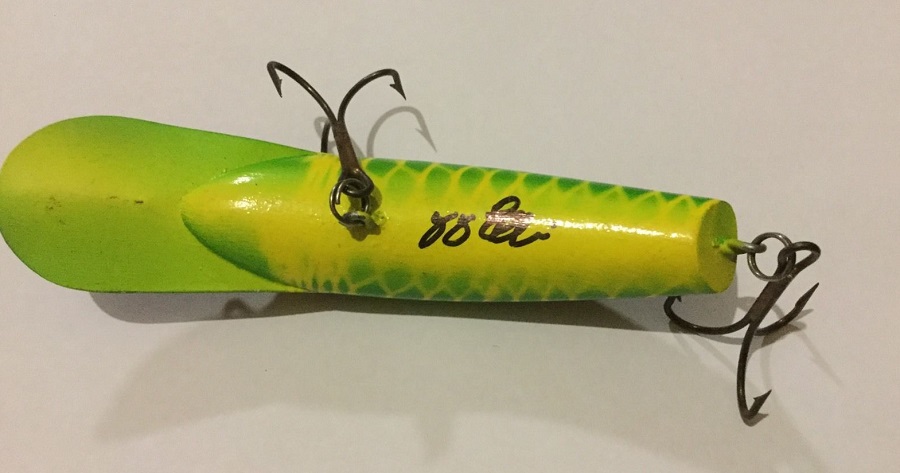
By late 1991 the range of Stumpjumper lures were no longer made in timber and John had established a high quality moulded product that was a best seller by 1993. The lure below is one of the original proto mega Stumpies . . . .
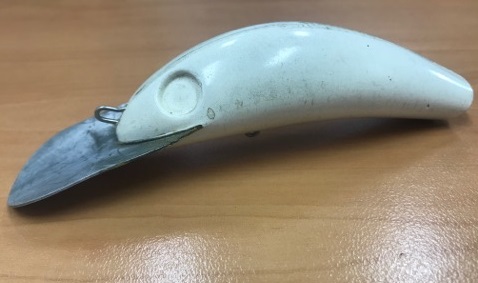
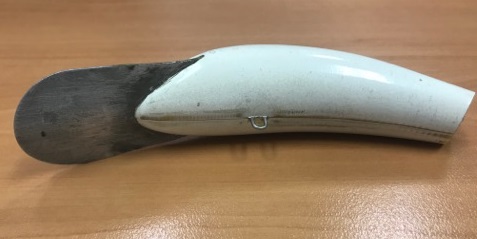
One of the models that has been fetching big dollars recently is the early plastic moulded model that was released with a fixed painted bib similar to the early wooden Stumpjumpers. Shown here is the packaging for these with correct colour code and unused lure. Items such as this fetch a high premium and this lure sold in the $300 price range at Expo 2018. There have been a number of similar unpackaged examples that have fetched from $150-275 depending on condition on Ebay.
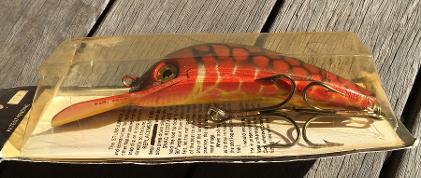
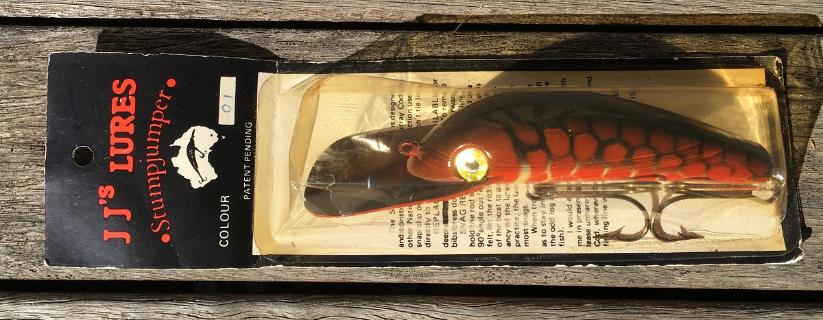
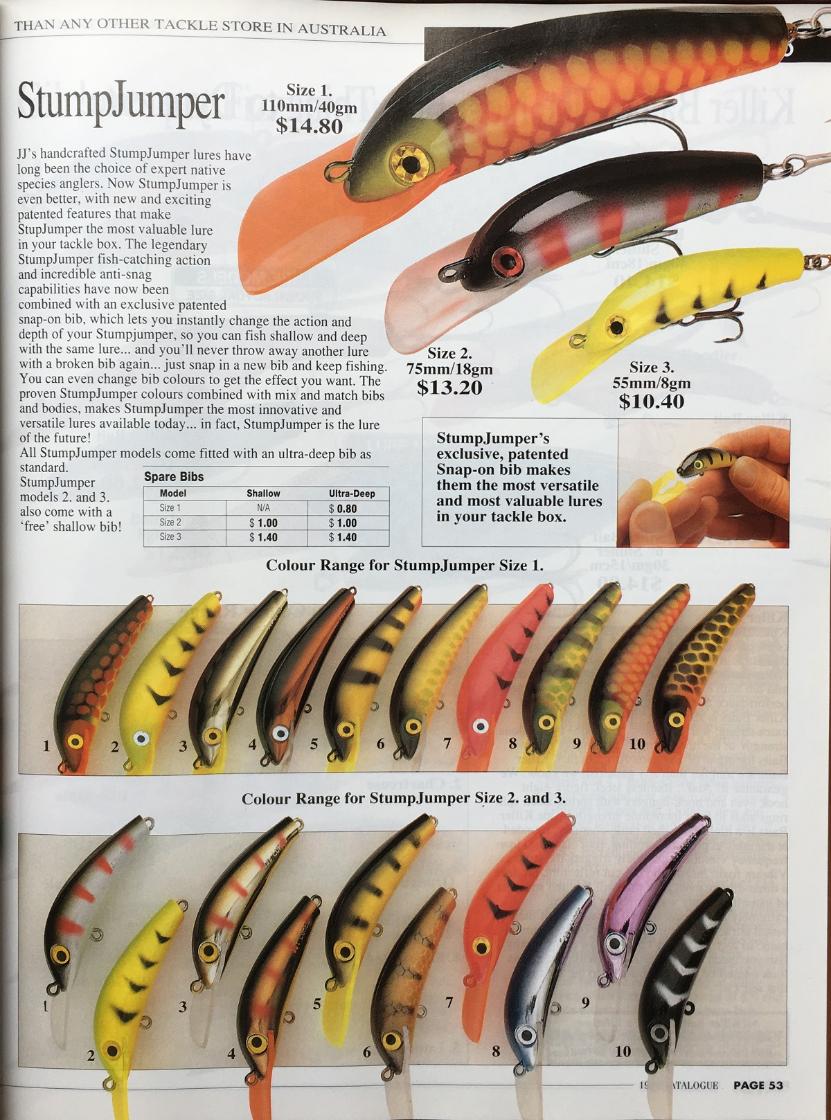
Harbord Tackle Supply, 1993
'The StumpJumper was available in three sizes and only one style, but StumpJumper released the mid-size Stumpies – three new models that fit right in between the existing models in size. There are also plans for a tropical version that will be a little sleeker and have a tighter action. All in all, StumpJumper has expanded its range very well, covering more fishing options. Diving depths are almost immaterial these days on Stumpies because the bibs are interchangeable. You can have a lure that swims at two feet as easily as a lure that swims at 15 feet. You can turn the deep diving bib upside down and have a lure that swims on or near the surface, or even take out the bib and fish the lure straight up as a wakebait lure. Big cod, barra, queenies and GTs find this presentation irresistible in the right place at the right time.'
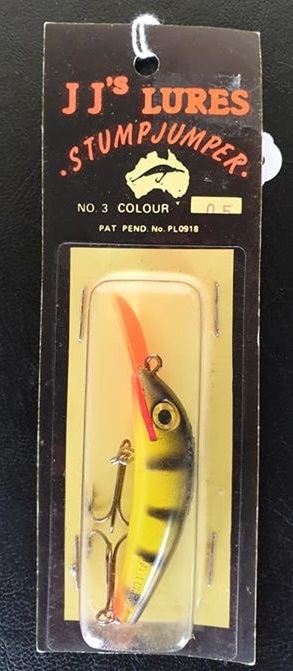
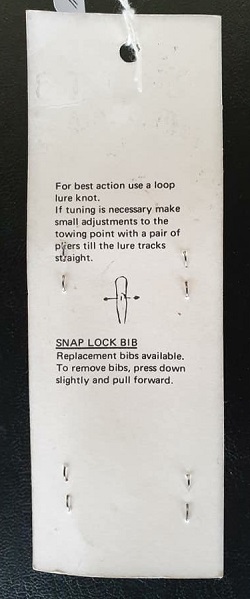
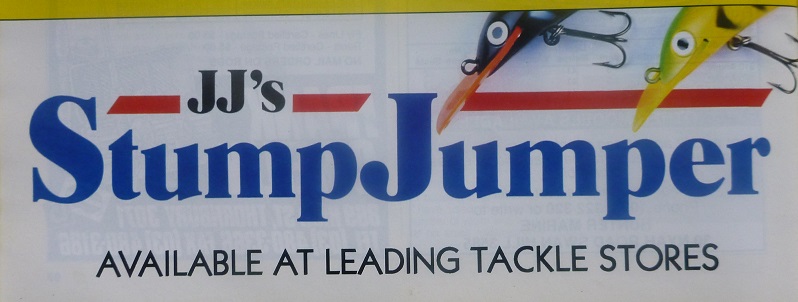
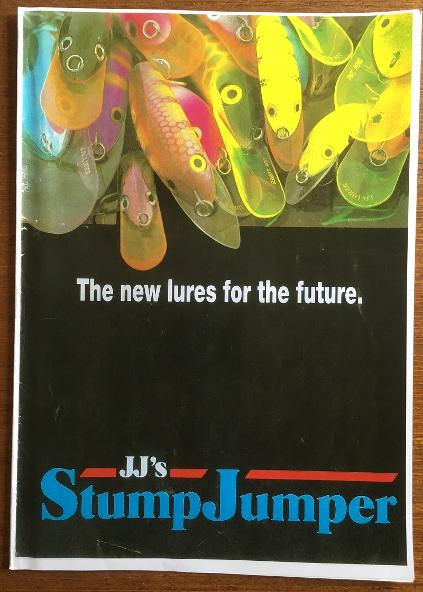
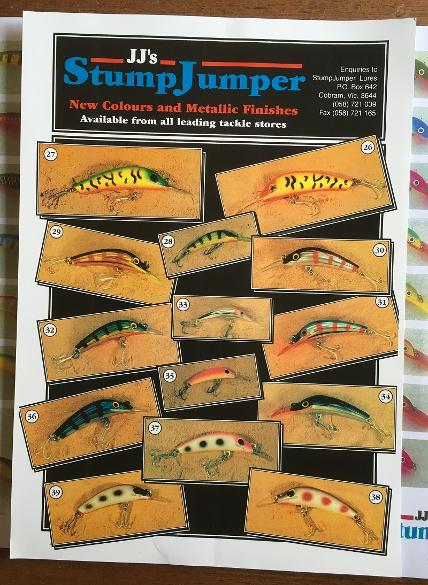
Older JJ's Stumpjumper advertising material showing the first 25 colour catalogue with additional insert (colours 26-39)
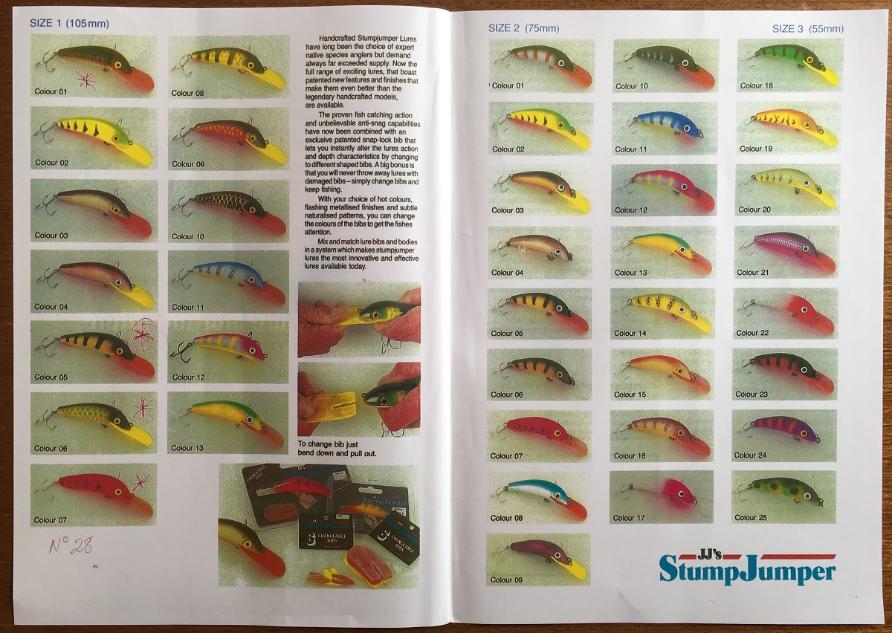
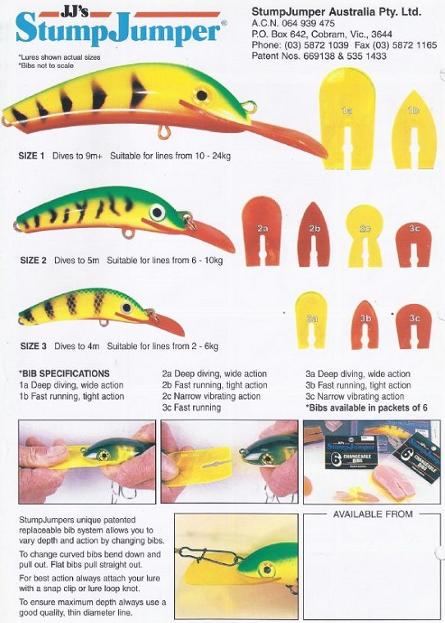
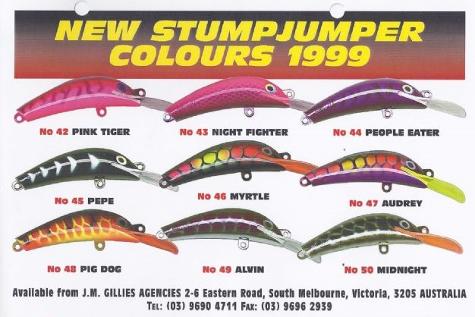
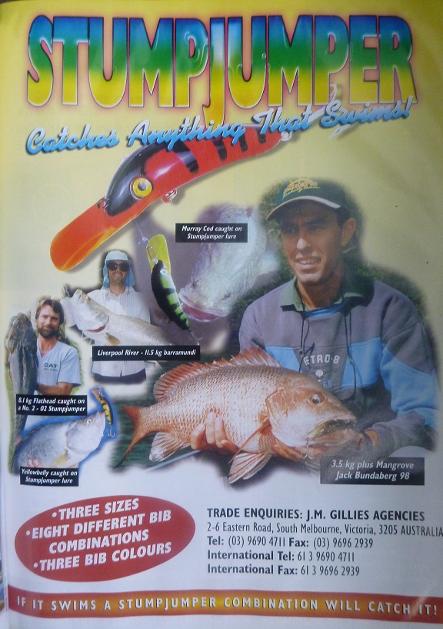
Below shows the packaging for the plastic stumpjumpers distributed by J.M Gillies Agencies.
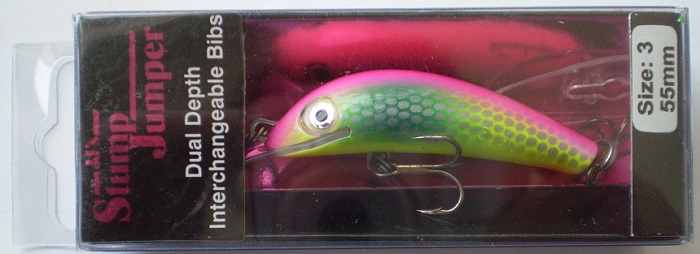
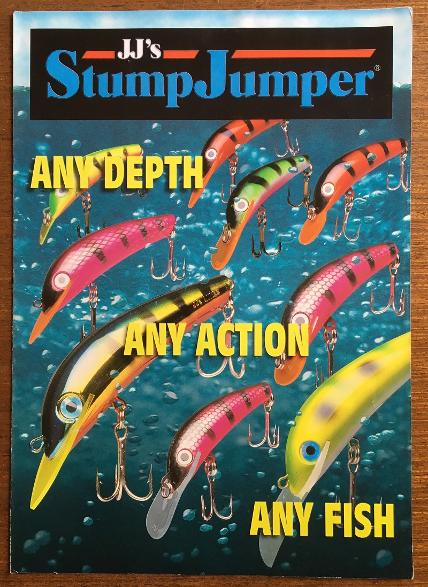
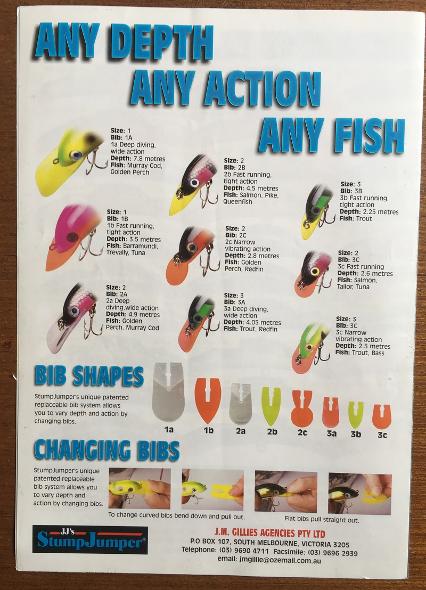
JJ's Stumpjumper advertising material moving into the 2000's
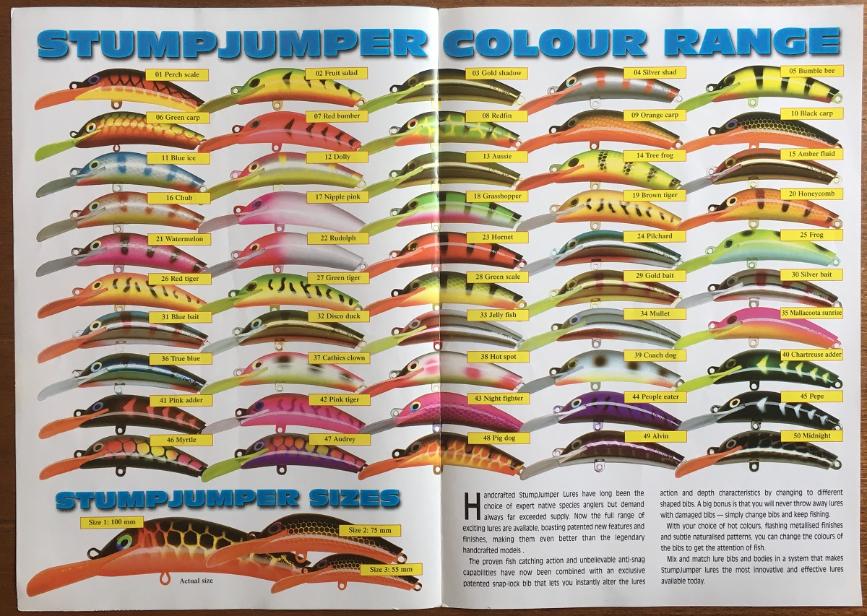
There is lots of older JJ's Stumpjumper advertising material out there in magazines and catalogued material however history around the early wooden Stumpjumper shows up occasionally and is referred to in a number of fishing articles. Examples are shown below.
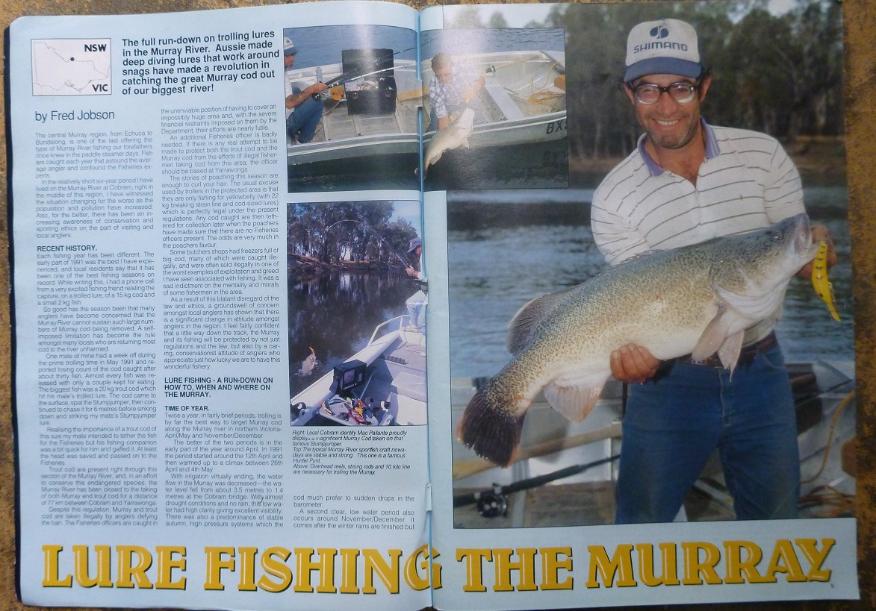
The article above was written by Fred Jobson and it contains the same photo that was used for the original advertisements
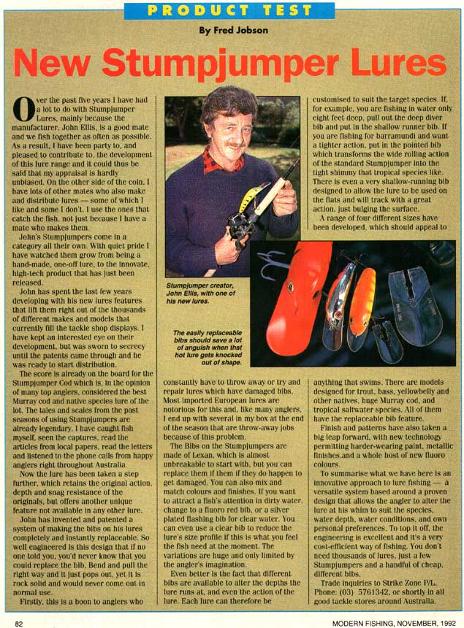
Above is a product review from Modern Fishing magazine in November 1992. Right is a small article from 1994.
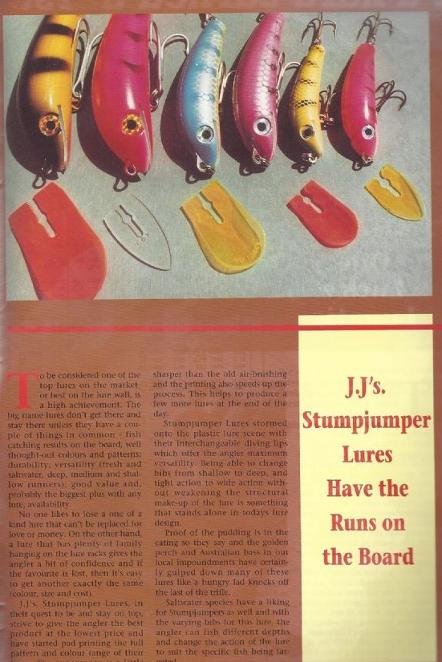
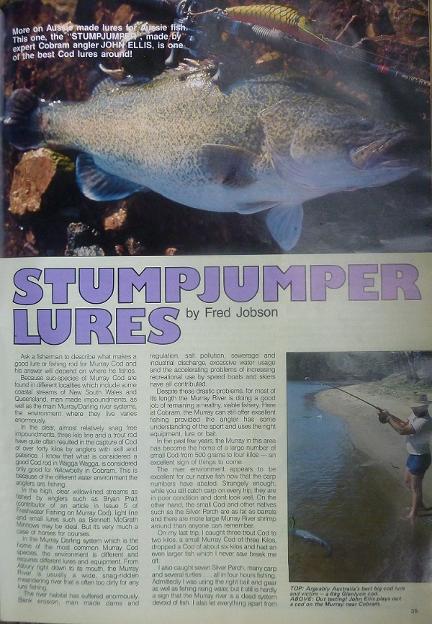
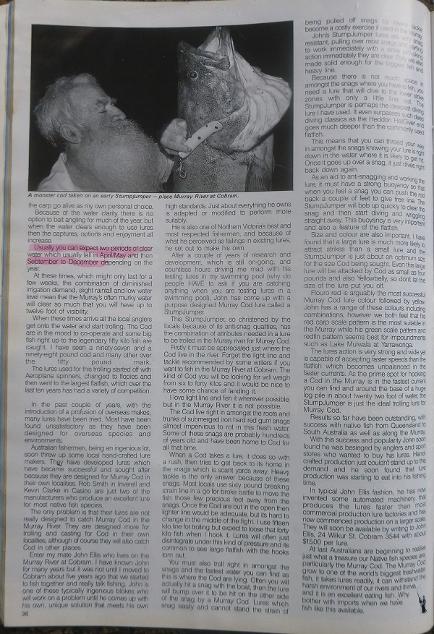
Another early article by Fred Jobson
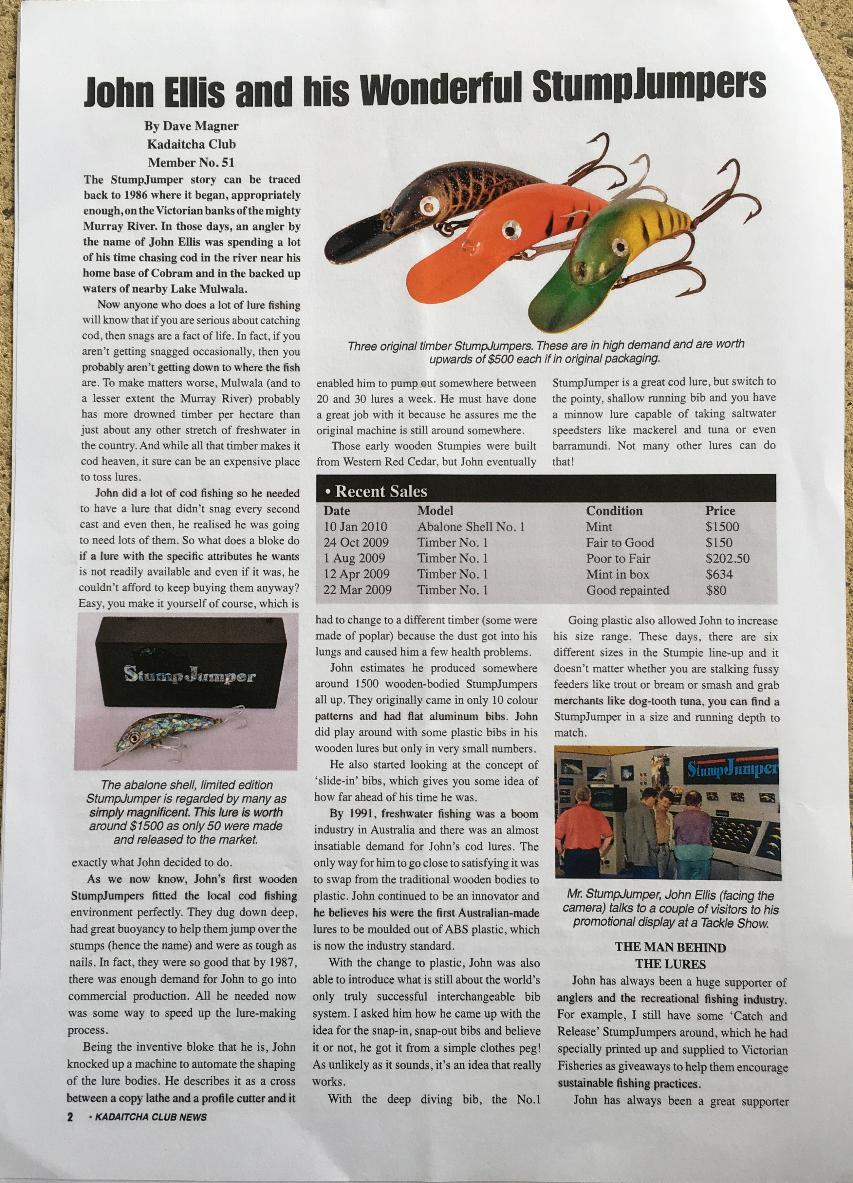
This article was written by Dave Magner for the second Kadaitcha Club Newsletter Issue 2 , 2010
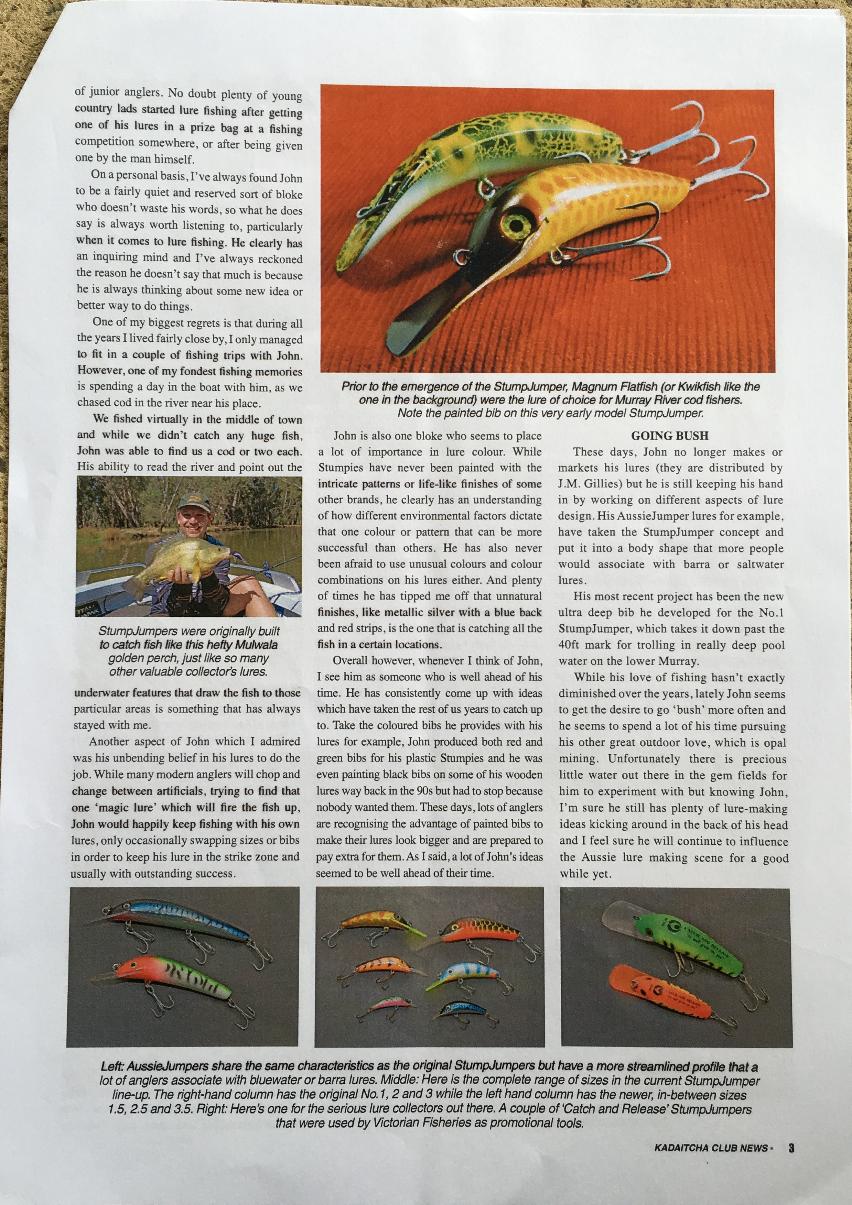
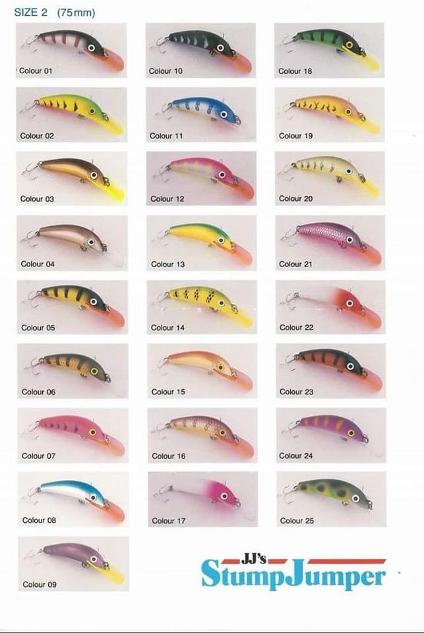
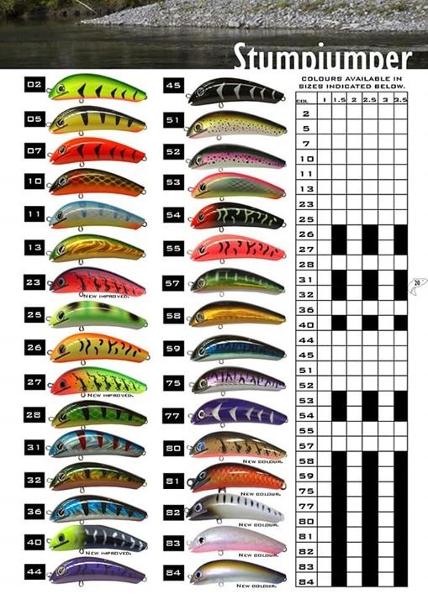
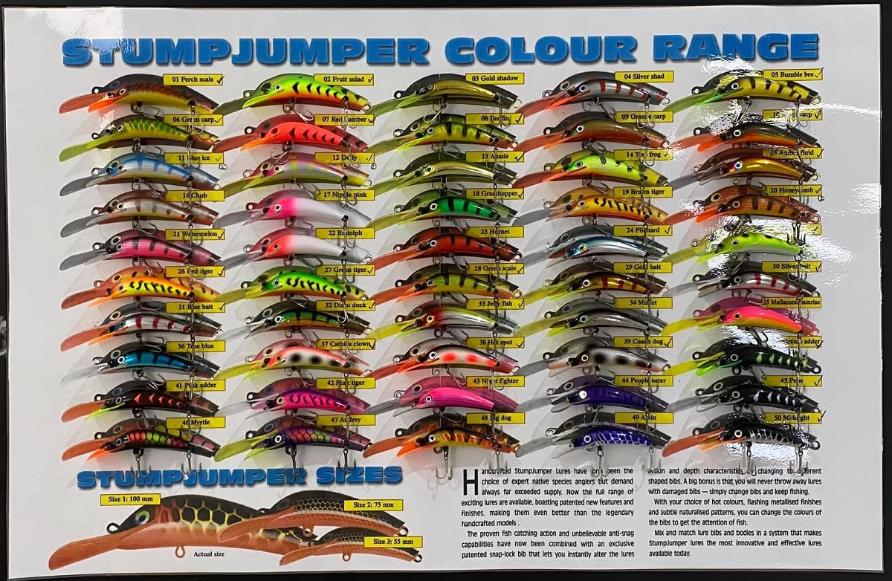
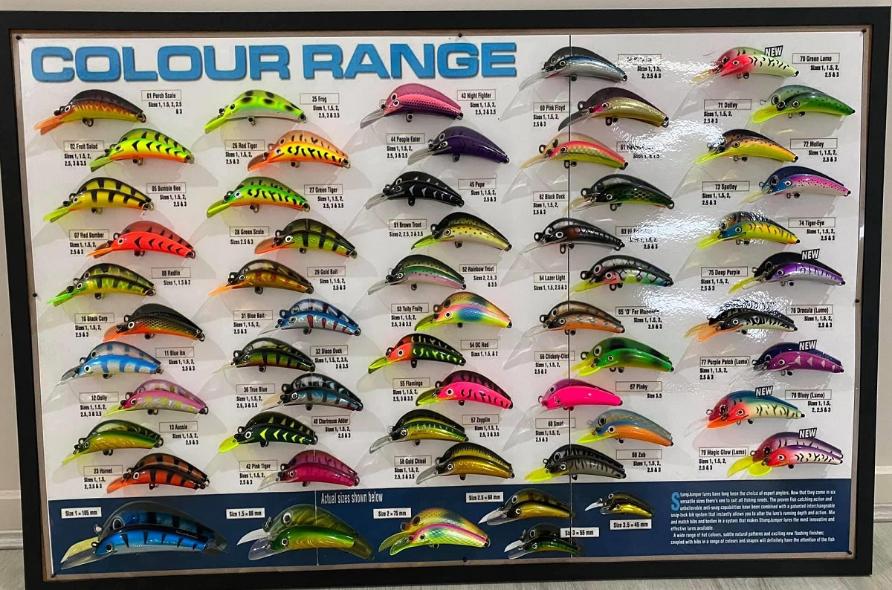
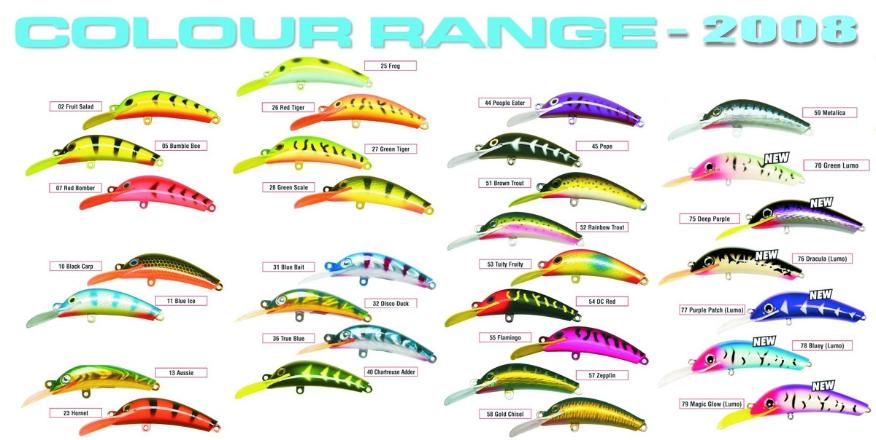
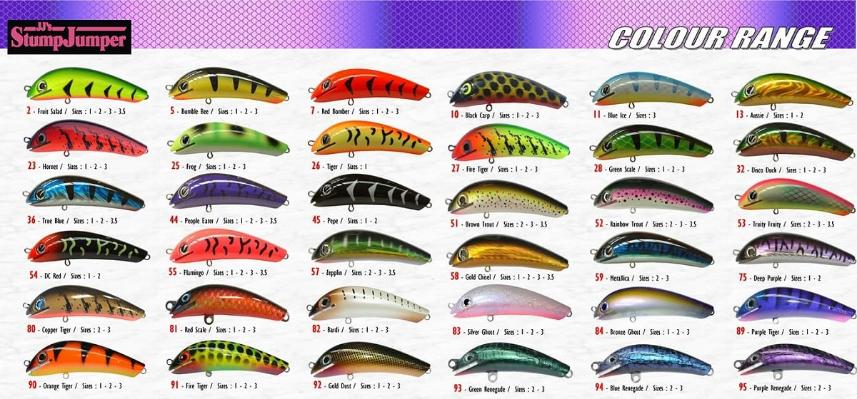
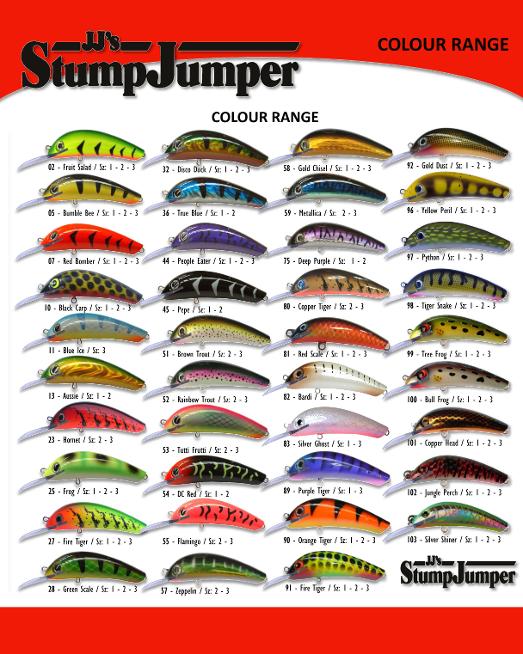
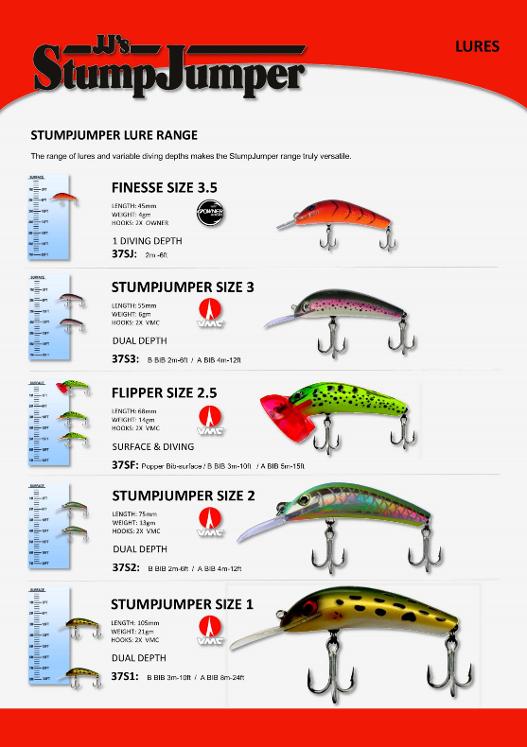
The current range for 2016 is shown left with the colours codes.
